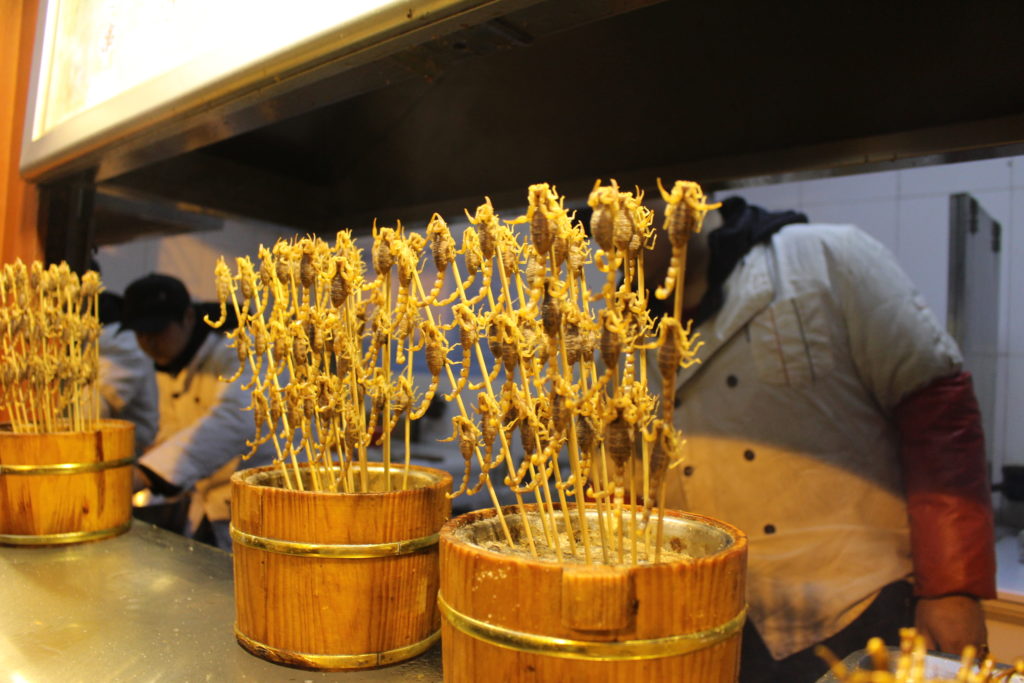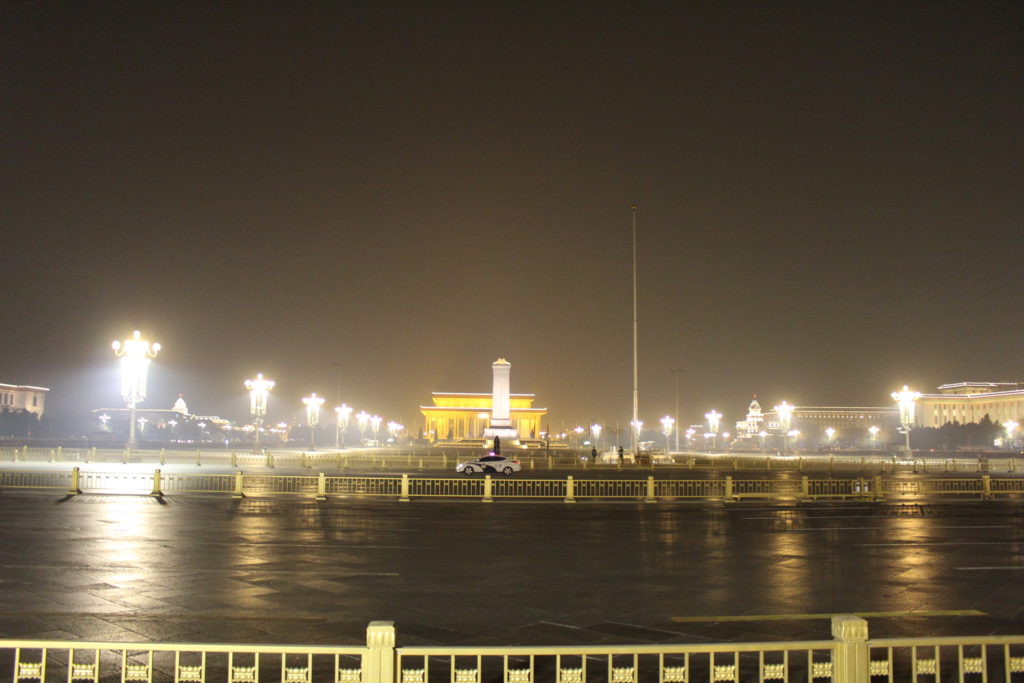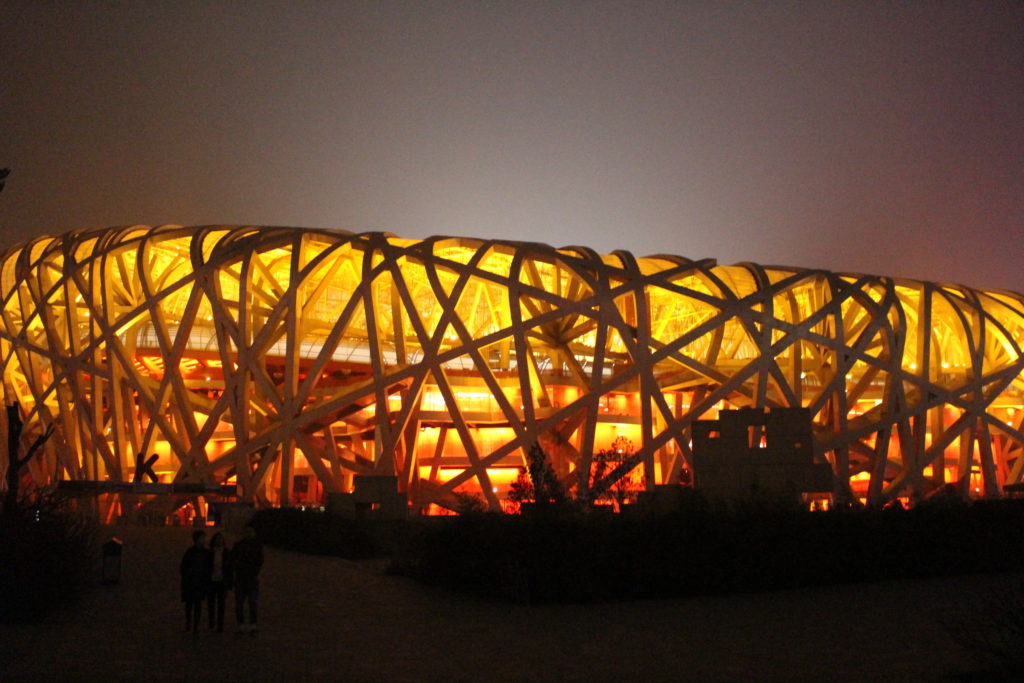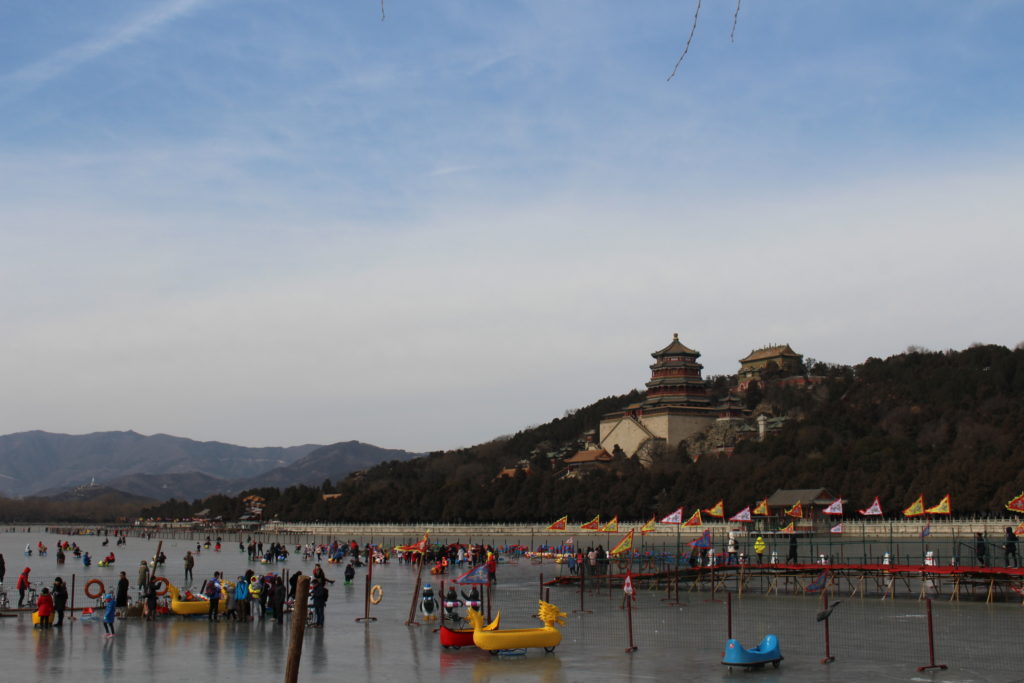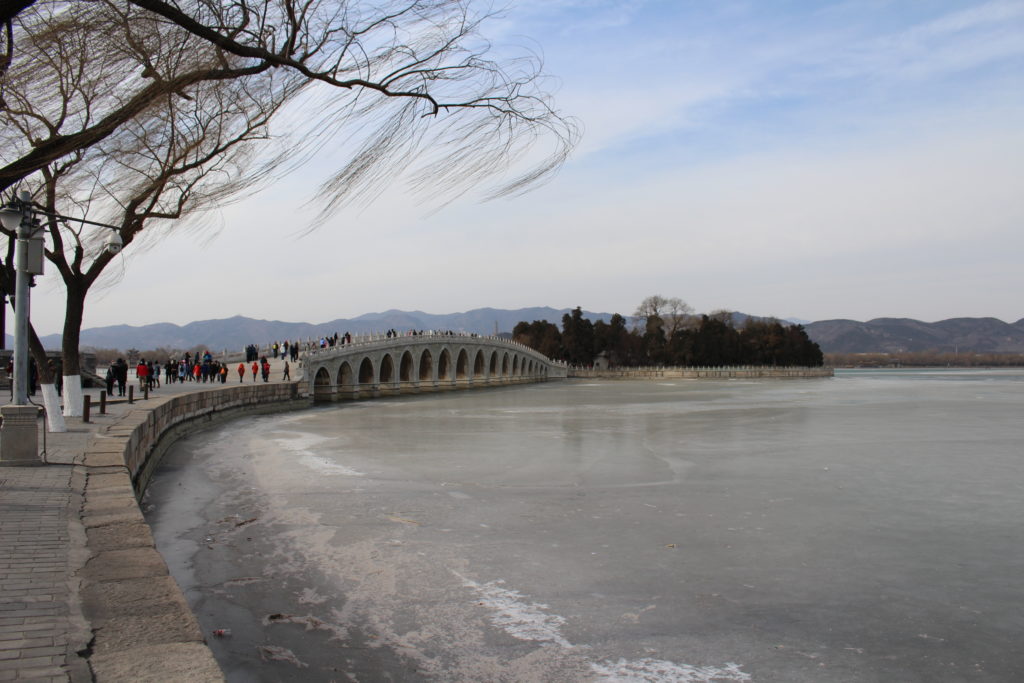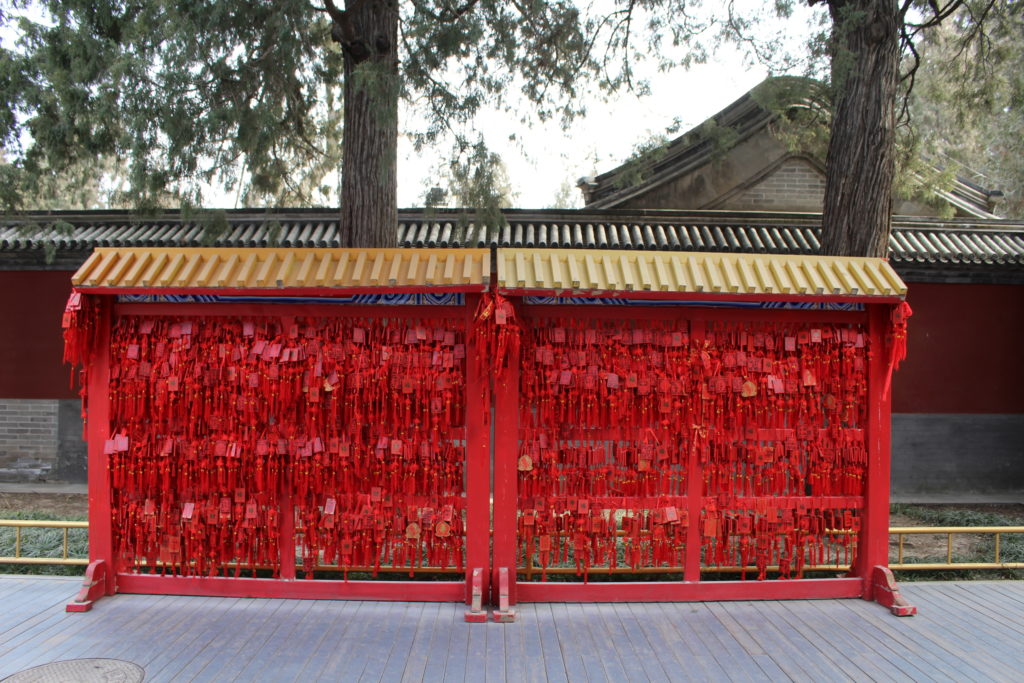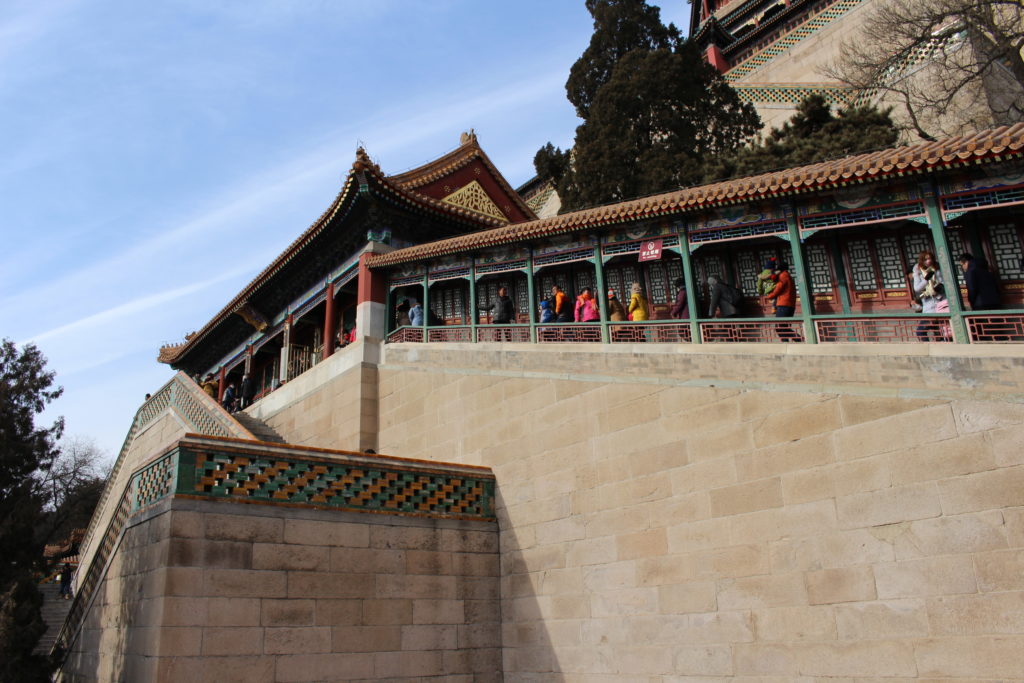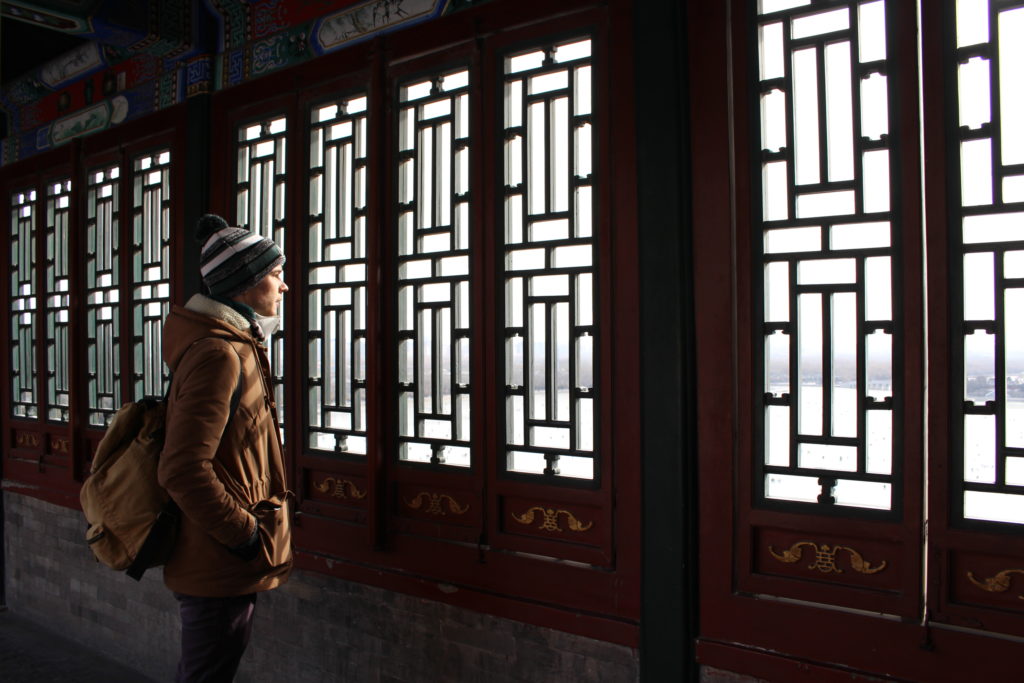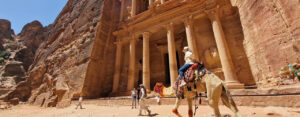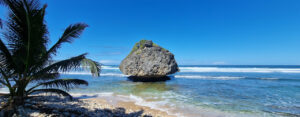
The Desolation of Smog
This is a continuation of my jaunt to Beijing for Chinese New Year, which I left you last at the exit of the fabled Forbidden City. Yugyeong and I were in search of sustenance, and it didn’t take us long to unearth the local grub, quite literally. As we entered a traditional market in the centre of the capital, our senses were assaulted by all manner of unfamiliar sights, sounds and smells. However, it was the scorpions-on-a-stick that really grabbed our attention, looking all crisp and primed for consumption. I opted for some-form-of-meat-on-a-stick instead, along with a suspicious red sauce that very nearly blew my head off. With the market more crowded than a Cambodian prison, we opted to escape down a side alley and began our trip across the city to Olympic Green (the location of the 2008 spectacular), passing an illuminated Tiananmen Square on our way.
Beijing’s Olympic Park lies a metro ride away from the city centre although, once there, every stadia and arena is within easy walking distance of a wide thoroughfare designed to accommodate the vast crowds. I’ve always had a keen interest in the Olympics, and the Chinese edition was one that I watched countless hours of coverage on. As such, I knew my way around the park already, without the need for a map or to attempt to ask a local for directions. The magnificent Bird’s Nest, glowing gold in the twilight, will also be utilised for the 2022 Winter Olympic Games, with Beijing becoming the first city on earth to host both incarnations. Right, that’s enough Olympic information for now. As the temperature plummeted well below freezing once more, we headed back towards our hostel for our final night with Zhang Wei and his effervescent clan.
The year of the rooster began late last night, as a cacophony of pyrotechnics erupted across the capital. Our hosts didn’t go as far as fireworks but we did have a bottle or three of warm baijiu (a Chinese liquor made from fermented sorghum – tasty). For the final day of our trip, we were off to the northerly outskirts of the city to a vast ensemble of lakes and halls known collectively as the Summer Palace. Once an imperial garden during the Qing Dynasty (which began in 1735), the site now covers an expanse of almost three square kilometres, three-quarters of which is water. And, as we discovered at the Forbidden City’s moat, Beijing’s bodies of water tend to freeze over in winter, with Kunming Lake (the gardens’ centrepiece) being no different. What was different was the ability to hire a wide array of multi-coloured sledges, from yellow dragons to pink penguins, for recreational purposes. Worryingly, the ‘frozen’ lake was anything but just a few metres from where the local kids were sliding around – British health and safety would have had a field day.
In the centre of the lake lies Nanhu Island, which is reachable via an elegant seventeen-arch stone footbridge and comprises a temple, a small museum and a place to hang your red love tassels (relieved I’ve finally found a location for all of mine). It also provides a superb view of the palace itself, which is situated high on Longevity Hill – our next terminus. The crowds were out in force as we battled and fought our way up the narrow staircases that lead to Front Hill – the location of the first collection of intricately-decorated pavilions, halls and temples. Now, as impressive as they were, I found myself comparing them somewhat unfavourably to the mountainous Buddhist sites in Korea, which receive about a fraction of the visitors. It is at times like this that I feel grateful for basing myself in ‘The Land of the Morning Calm’ (South Korea), as opposed to ‘The Land of the Obtrusive Tourist’ (China).
Following Front Hill, not unsurprisingly, is Back Hill, which requires some slightly more precarious stepping until you reach a small courtyard at the apex of the site. From here, you are treated to a quite spectacular view of the palace grounds, as well as greater Beijing on the all-too-smoggy horizon. Like ants on a cowpat, the number of visitors is easier to grasp from above, with the Summer Palace being one of the most visited tourist attractions in the city (and my god don’t we know it). On our way back to ground level, we came across an elderly man writing poems on the stone floor with only a long brush and bottle of water. He carefully formed each character with the utmost care, creating wonderful designs before the water would evaporate and force him to start over. It was a nice touch (I can assure you it was more impressive than it sounds).
So, that brings to a close our whistle-stop tour of the Chinese capital. Going to Beijing for only two nights was always going to be a hurried affair. Although, we made sure not to try and condense too much into our short time. We said no to the Great Wall, and basically anything that wasn’t within walking distance, as we would’ve been far too rushed to enjoy its sturdy splendour. Instead, we used this opportunity to meet some of the locals and experience something close to a traditional Chinese New Year. China is a vast country, and I am absolutely certain that I will return for a far more detailed look at its stunning scenery and unique wildlife at some point in the near future. However, for now, it was back to Daegu for the final time – as we prepared for our greatest adventure yet…
J
